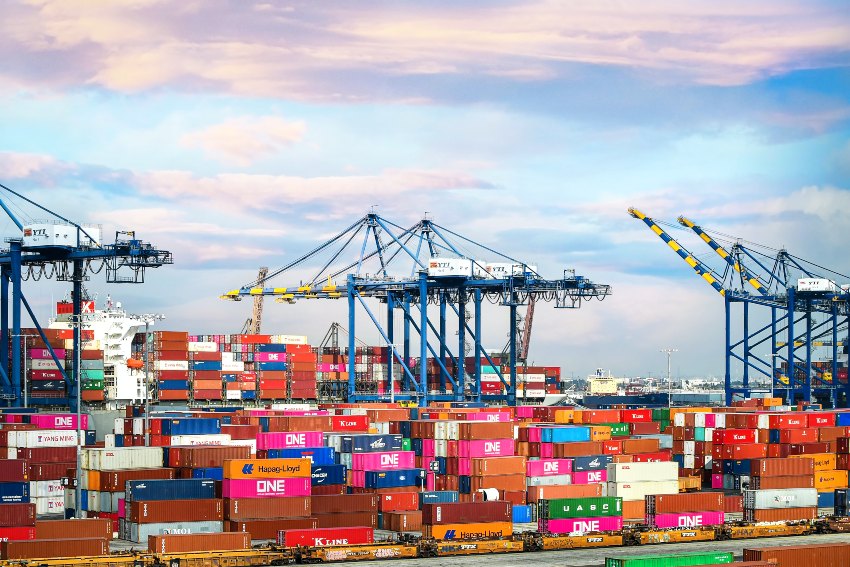4 November 2021
Managing the Global Supply Chain While Dealing with the Effects of COVID
By Josh Baxt

Image: Barrett Ward
The international supply chain is a lot like a desktop computer: Most people take theirs for granted – until it stops working. The COVID-19 pandemic has put unexpected pressures on the supply chain, driving shortages in consumer and other goods. The phrase "that's on backorder" has now become routine. It's as if the existing system wasn't built to withstand a global health crisis.
"Until around two years ago, everybody was lean, lean, lean," says Greg Muller, who has a long career in the business and teaches in UCSD Extension's Supply Management Certificate program. "Companies would keep as little inventory and as few suppliers as they could possibly get away with. We're seeing that process is quite brittle."
Muller has seen the supply apparatus from all angles. He started in sales in the windows and doors industry before moving to HD Supply, which is like Home Depot for large buyers – apartment complexes, universities, hotels.
"They sell goods that keep these operations running: pipe, paper, appliances, parts, tools," says Muller. "I was an associate merchant, which is a half-and-half position. I handled buying, sourcing items, negotiating prices and figuring out how to market everything I just bought."
 Muller joined UC San Diego in 2016 as maintenance repair and operations (MRO) commodity manager, flipping to the end of the supply chain. Later he was promoted to senior manager of Strategic Sourcing and Campus Partnerships, managing the university's large and/or high-risk purchases.
Muller joined UC San Diego in 2016 as maintenance repair and operations (MRO) commodity manager, flipping to the end of the supply chain. Later he was promoted to senior manager of Strategic Sourcing and Campus Partnerships, managing the university's large and/or high-risk purchases.
There was a learning curve in coming from private industry to a public university. The UC system has a lot of rules on how to make purchases. However, there are unique opportunities as well.
"In private industry, we're always trying to compete with everyone else," says Muller. "You would never even think to call your closest competitor to talk about how the year is going, what's working well or not so well. In higher ed, we do that every day."
Peeling the Supply Chain Onion
Supply chains are complex machines with lots of moving parts. Most basic purchases are automated, and it's up to the procurement people to provide oversight, periodically looking for better value.
"There's a lot of inventory management forecasting," says Muller, "figuring out how much to buy and when. How you balance that with the lead times in a normal world, and how to manage the lead times in today's world."
Strong relationships can help. One supply chain misconception is that large companies – Apple, Walmart, Target, etc. – are only trying to squeeze as much value as possible out of their smaller suppliers. However, Muller notes it's more of a dance, in which the terms benefit all parties.
"Sometimes people believe suppliers are kind of faceless producers," he says. "But in the real world, there's a lot more give and take, and that has to provide value for the producer. If they're not making money, there's no reason for them to be in business."
Adding COVID
Until COVID, most people didn't think much about where their goods came from or how they got to the shelf. That changed quickly when the shelves were sometimes empty.
The COVID-related miscalculations have been wide and varied. Early on, with lockdowns in Wuhan and other industrial regions, factory workers simply could not get to work. In other cases, manufacturing couldn't ramp up fast enough to meet disease-related needs: cleaning supplies, gloves, plastic tips for testing.
"The demands kind of followed a rational pattern, where a specific need increased, usually in response to testing or sanitation, and supplies became short," says Muller.
There are fewer manufacturing shortages and more authentic supply chain issues: Hiccups at ports, driver shortages and other bottlenecks that stall the goods pipeline. That can have a ripple effect, as an auto manufacturer may need a specific electronic component to complete its SUVs. But what will the long-term ramifications be for the supply chain?
"We will need to make adjustments: build up more capacity, raise wages for drivers, bring more trucks online," says Muller. "Companies are less lean than they were before, but it's unclear whether that will last."